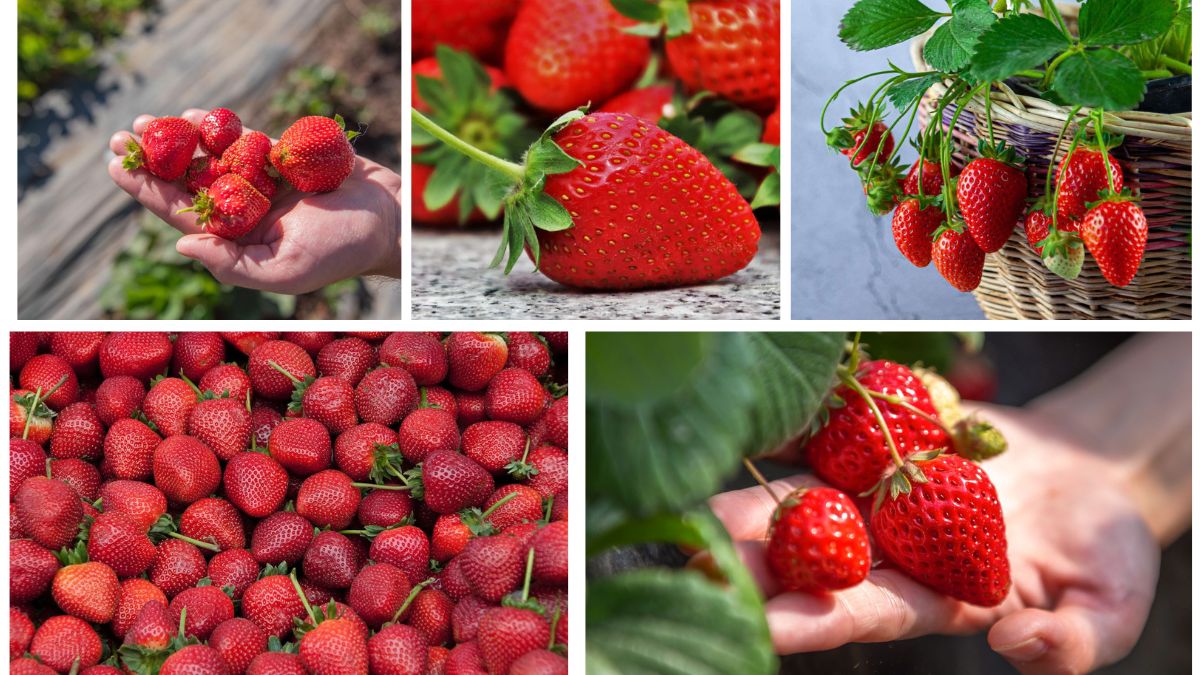Strawberries are one of the most loved fruits in the world, known for their sweet flavor, vibrant red color, and versatility in desserts, drinks, and snacks. Growing strawberries at home can be both rewarding and cost-effective, giving you access to fresh, chemical-free berries right from your garden or balcony. With the right techniques, you can enjoy continuous harvests throughout the season instead of just one flush of berries.
This step-by-step guide will walk you through everything you need to know about growing strawberries for fresh berries all season, including selecting the right varieties, planting methods, care routines, and harvesting tips.
Understanding Strawberry Types
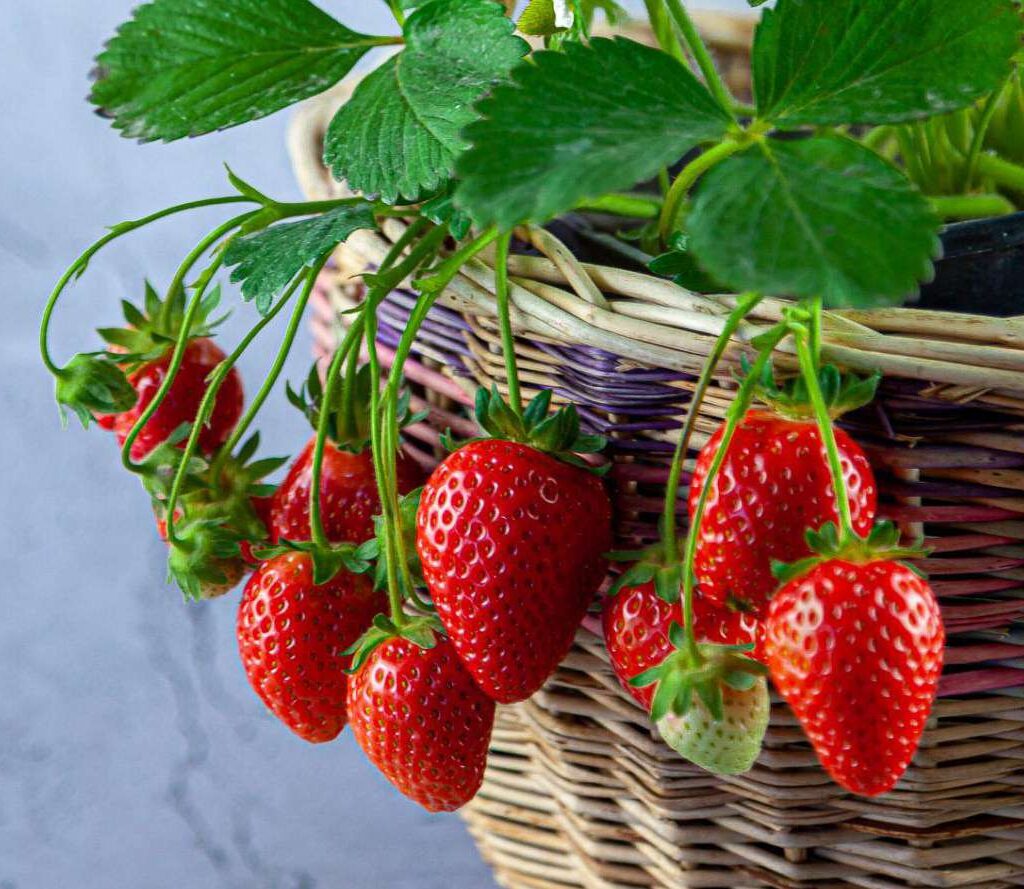
Before planting, it’s essential to know the three main types of strawberries. Each variety has its own production cycle, which directly affects how often you’ll get fresh berries.
- June-Bearing Strawberries
- Produce one large crop of berries in early summer (usually June).
- Best for those who want a large harvest for freezing, jams, or desserts.
- Not ideal for continuous harvest.
- Everbearing Strawberries
- Produce two to three smaller harvests: one in spring, one in midsummer, and another in fall.
- Provide berries throughout the season but not in huge quantities.
- Day-Neutral Strawberries
- Produce continuously as long as the temperature stays between 35°F and 85°F (2°C–29°C).
- Ideal for gardeners who want fresh strawberries all season long.
For continuous harvests, day-neutral and everbearing strawberries are the best choices.
Choosing the Right Location
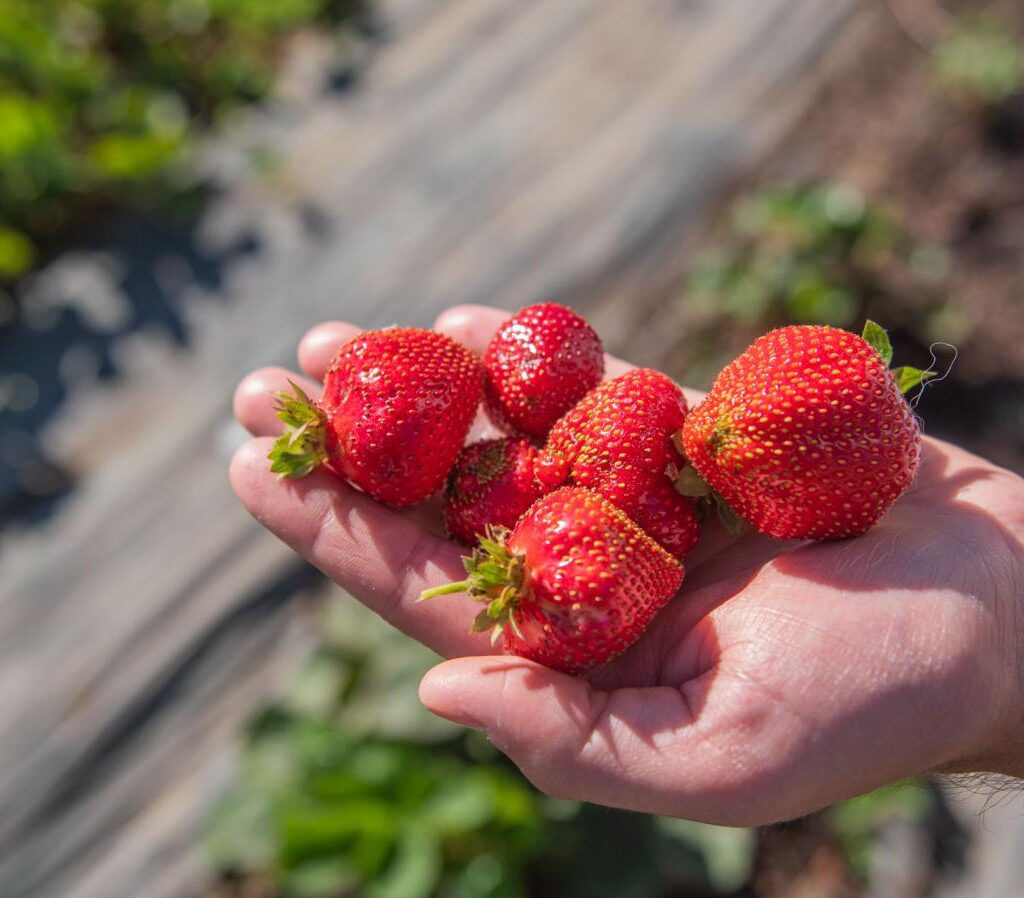
Strawberries need the perfect growing environment to thrive and produce sweet, juicy fruit.
- Sunlight: Strawberries require at least 6–8 hours of direct sunlight daily. More sunlight results in sweeter berries.
- Soil: Well-draining, slightly acidic soil with a pH between 5.5 and 6.8 is ideal. Heavy clay soil should be amended with compost or sand to improve drainage.
- Space: Good airflow around plants prevents fungal diseases like powdery mildew. Avoid overcrowding.
- Rotation: Don’t plant strawberries where tomatoes, peppers, or eggplants grew in the past two years to prevent soil-borne diseases.
Preparing the Soil
Healthy soil ensures strong root systems and productive plants.
- Clear the Area: Remove weeds and rocks from the planting site.
- Add Organic Matter: Mix compost, aged manure, or peat moss into the soil to improve fertility and structure.
- Test pH: Adjust soil acidity using lime (to raise pH) or sulfur (to lower pH).
- Raised Beds: If your soil is too heavy, plant strawberries in raised beds or containers for better drainage.
Planting Strawberries
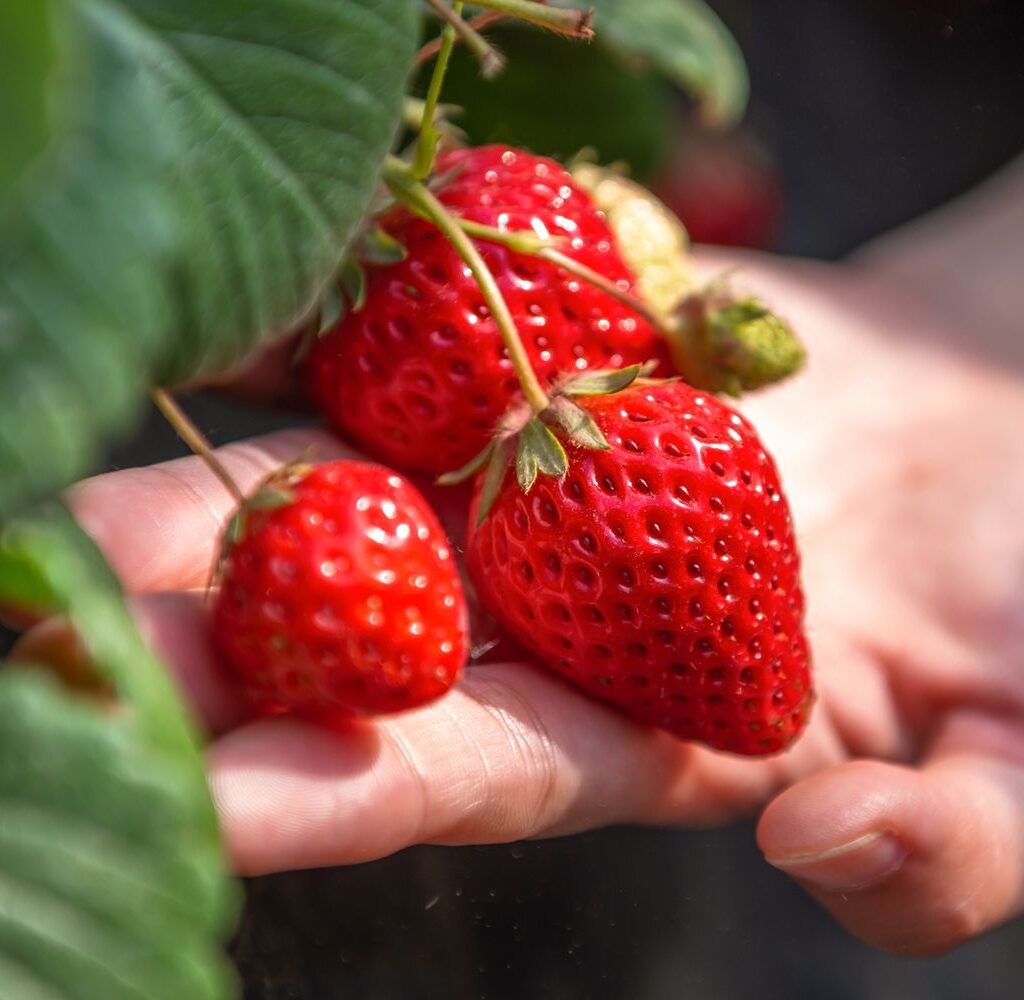
Strawberries can be planted directly in the garden, raised beds, or even containers, making them perfect for any space.
When to Plant
- In mild climates, plant in early spring.
- In warmer regions, strawberries can also be planted in the fall for earlier harvests.
How to Plant
- Dig Holes: Each hole should be deep enough to spread the roots without bending them.
- Spacing: Place plants 12–18 inches apart, with rows spaced 2–3 feet apart.
- Crown Positioning: Plant the strawberry crown (where roots meet stems) at soil level. Planting too deep may cause rot, while planting too shallow may dry out the roots.
- Water Well: After planting, water thoroughly to help roots establish.
Container Planting
- Choose pots or hanging baskets with good drainage.
- Use a high-quality potting mix enriched with compost.
- Great option for balconies, patios, or small gardens.
Caring for Strawberry Plants
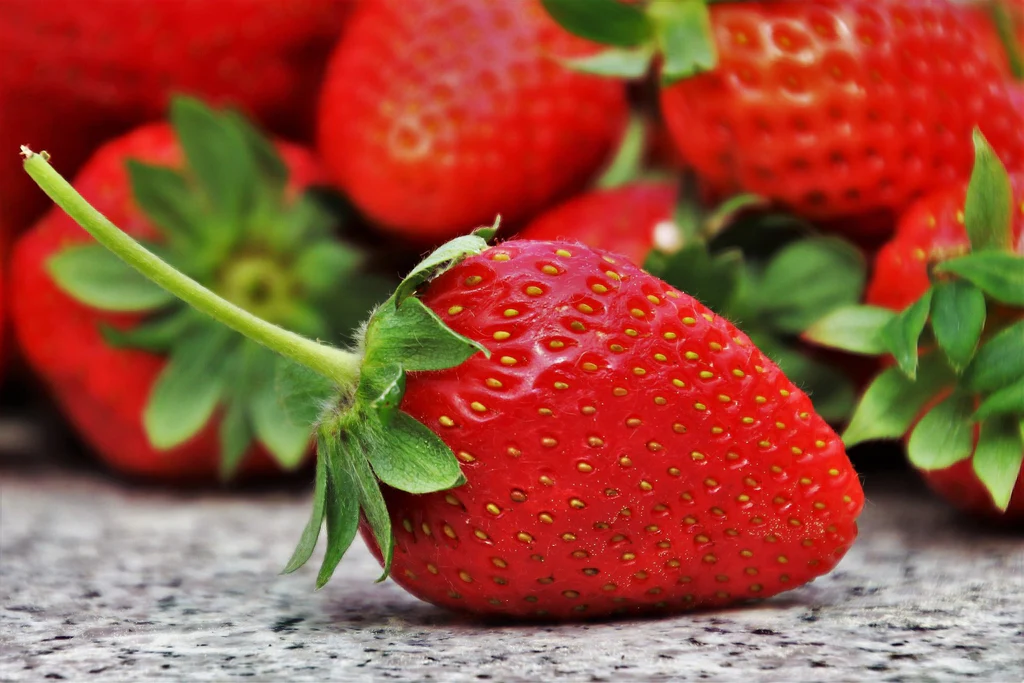
Once planted, strawberries need consistent care to ensure continuous harvests throughout the season.
Watering
- Keep soil consistently moist but not waterlogged.
- Water 1–1.5 inches per week, preferably at the base of the plant to avoid wet leaves, which can cause disease.
Mulching
- Apply straw mulch, pine needles, or shredded leaves around plants to:
- Retain soil moisture
- Suppress weeds
- Keep berries clean and dry
Fertilizing
- Fertilize with a balanced fertilizer (10-10-10) when planting.
- For everbearing or day-neutral varieties, feed again every 4–6 weeks to encourage continuous fruiting.
- Avoid over-fertilizing, which can lead to lush leaves but fewer berries.
Pruning and Runners
- Remove runners (long stems producing baby plants) if you want bigger berries and continuous production.
- If you want more plants, let some runners root and establish for the following year.
- Trim dead or yellowing leaves to improve air circulation.
Protecting Strawberries from Pests and Diseases
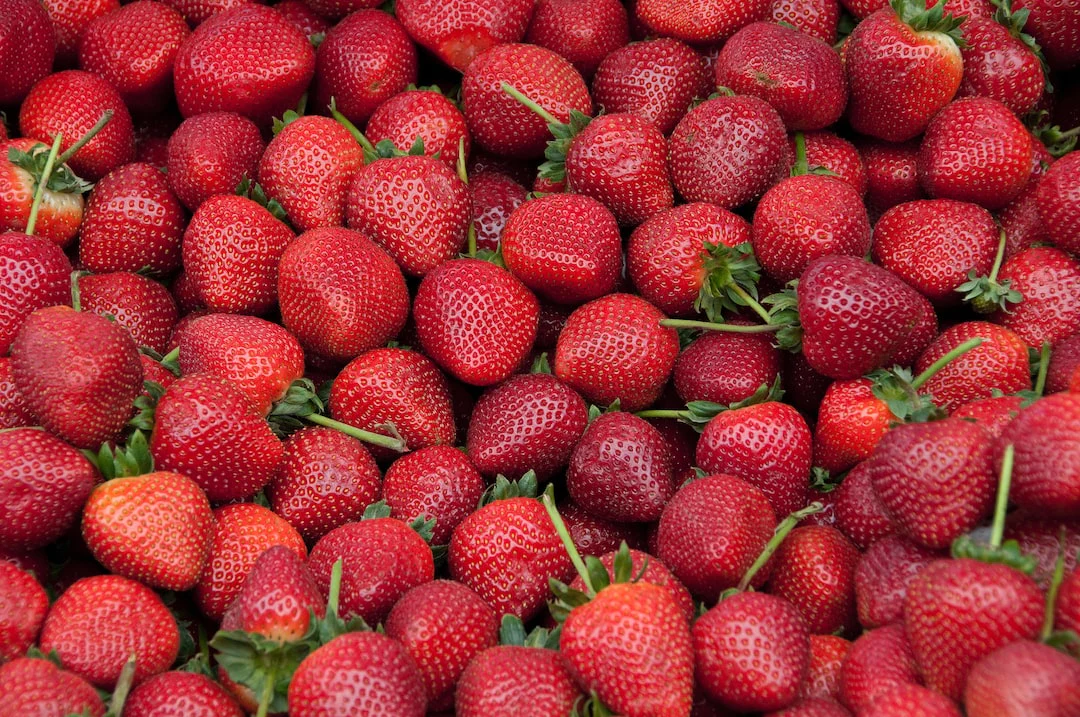
Strawberries are prone to pests and fungal issues, but preventive measures can save your harvest.
Common Pests
- Slugs & Snails: Use beer traps, copper tape, or diatomaceous earth.
- Aphids & Spider Mites: Spray with insecticidal soap or neem oil.
- Birds: Use netting or garden fleece to protect ripe berries.
Common Diseases
- Powdery Mildew: Ensure good airflow and avoid overhead watering.
- Gray Mold (Botrytis): Remove affected berries and leaves immediately.
- Root Rot: Prevent by using well-draining soil and avoiding waterlogging.
Harvesting Strawberries
The most rewarding step is enjoying fresh strawberries right from your garden.
- When to Harvest: Pick berries when they are fully red and firm. Unripe berries won’t ripen after picking.
- How to Harvest: Gently twist and pull, leaving the green cap attached to keep berries fresh longer.
- Frequency: Check plants every 2–3 days during peak season, as berries ripen quickly.
Extending the Harvest Season
To ensure a steady supply of fresh strawberries, follow these strategies:
- Choose Day-Neutral Varieties: These will keep producing until frost.
- Succession Planting: Plant new strawberry beds every 2–3 years to maintain productivity.
- Container Growing: With containers, you can move plants to sheltered areas and extend the growing season.
- Frost Protection: In cooler climates, use row covers or cloches to protect plants and extend fruiting.
Storing and Using Fresh Strawberries
- Fresh Storage: Store unwashed strawberries in the refrigerator for up to 5 days. Wash just before eating.
- Freezing: Freeze whole or sliced berries for smoothies and desserts.
- Preserving: Use strawberries to make jam, syrups, or dried snacks.
Conclusion
Growing strawberries for fresh berries all season is easier than many gardeners think. By selecting the right varieties—especially everbearing and day-neutral types—providing proper care, and managing pests and diseases, you can enjoy sweet, juicy strawberries continuously throughout the growing season. Whether planted in a backyard garden, raised beds, or simple pots on your balcony, strawberries reward you with both beauty and delicious harvests.
With consistent attention to soil, watering, pruning, and protection, your strawberry plants can thrive for several years, ensuring your family has a steady supply of nature’s sweetest gift. There’s nothing more satisfying than stepping outside, plucking a fresh berry, and tasting the fruits of your labor.
